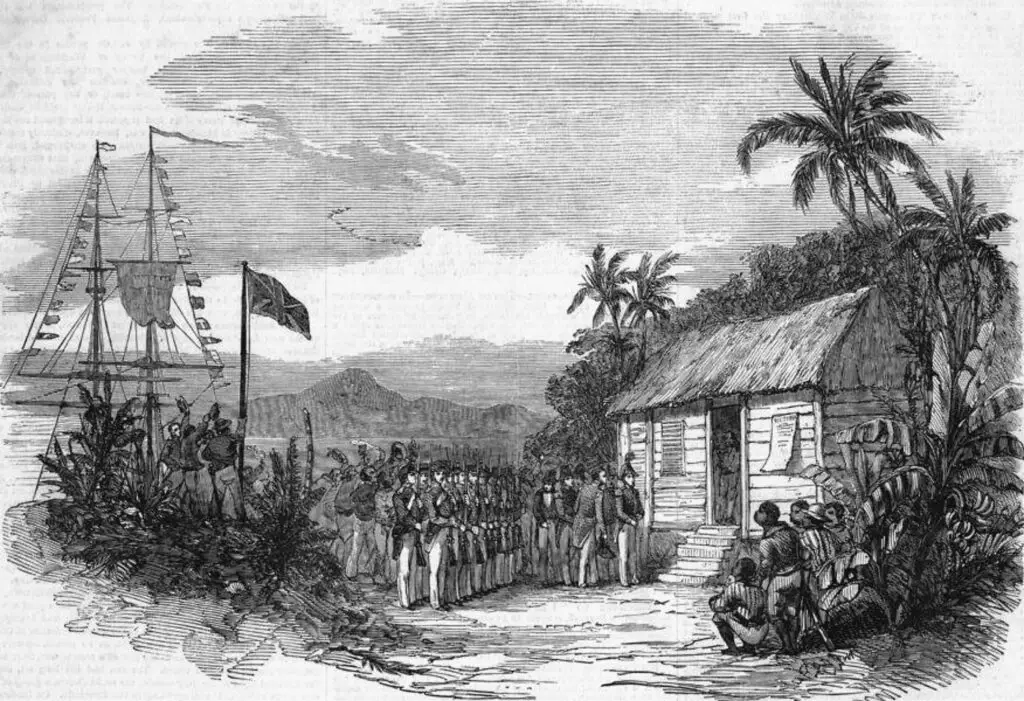
I am currently having a crack at writing a book about the History of Roatan , Helene and Barbarat . After all , ever since living here for some 35 years the history ( especially the British part of it )has intrigued me. There is so little known about it or documented anywhere locally for this matter , but it is out there , mostly stored away in dusty archives in random places like Kew or Edinburgh. As I write of course , I research and this of course takes me places , in the mind transported back in time. One historical reference in a bibliography leads to 5 more and from those 5 lead 20 more and so on much like a pyramid scheme.
Anyhow ,one such wormhole I went down was triggered while reading my Davidson’s historical Geography and came upon a paragraph which stated that Coxen’s Hole was for a time ( in 1838 ) renamed Port MacDonald . This also reminded me of a recent conversation with the Zolitur Director , Paula Bonilla when she wondered were the name Fancourt Flat ( a Coxen’s Hole suburb ) originated.
Since 1782 when Colonel Dalrymples meager force of conscripted woodcutters and single ship was forced to capitulate to a superior force after a 48 hour battle in Port Royal the Spaniards exercised little authority over their sovereignty of the islands as noted by Captain Henderson ( the commander of His Majesty’s forces in Belize ) in 1806 when he visited to suss out the lay of the land. 1821 brought the independence of Central America and with it the establishment of formal administrative outposts in the far flung reaches of the region.
Governance and orders for the the ailing King George IV’s realm in the Western Caribbean came from Jamaica and there was a regiment of HM forces stationed in Belize ( British Honduras as it was called prior to independence ) . The Superintendent ( the Governor of Jamaica being by default the Governor of Belize prior to independence ) was the Governor’s surrogate in this Jungle country which was the centre of the logging industry at the time in the Caribbean. In 1830 the Scot , Colonel Alexander MacDonald held this post ; a zealot for British Imperial expansion in the region he had already made a nuisance of himself with the Central American republic fighting with Nicaraguans over the Mosquitia and Isla del Tigre in the Pacific. In 1830 , Colonel MacDonald went to Roatan and seized it in his accustomed heavy handed style. This was followed by an ‘immediate and energetic remonstrance’ by the Federal authorities to the British Government. This invasion although not formally disavowed , was not approved of entirely but in any event MacDonald was thrown under the bus ( horse and carriage in those days ) and replaced by Sir Francis Cockburn.
For 8 years the British Superintendents in Belize kept a longing eye on the Bay Islands just waiting for a pretext to place them under their own jurisdiction ; this came in 1838. A group of recently liberated slaves from the Cayman Islands had arrived on Roatan to settle. The slaves were informed by the Commandant at the time , Don Juan Bautista Loustrelet ( who was based at the military station at Port Royal with a Sergeant’s guard in charge of a number of convicts ) that foreigners wishing to settle in Honduras were required to apply for permission from the Honduran government. Some did so but most appealed to the Superintendent for his support and guess who was back in that position again …..none other than Colonel MacDonald chomping at the bit to have a go at seizing Roatan again ! This was done almost immediatley with MacDonald descending on the island onboard his sloop , “Rover” and with a small force of Royal Marines landed forcibly in Port Royal and proceeded to lower the Central American flag and hoisted , in its place , the Union Jack. Some midshipmen even amused themself by dancing on the lowered flag . This scene is pictured in the sketch above , MacDonald and his men outside the Military Station with Commandant Loustrelet cowering inside and a few ‘middies’ having some fun with the lowered flag outside . The convicts in the foreground under the Banana suckers look on anxiously pondering their fate while the jubilant British subjects ( the Caymanians ) waved their hats in the air. MacDonald then re-embarked and no sooner had he done so than the Commandant lowered the Union Jack and once more raised the Central American flag. The infuriated MacDonald then turned back , reraised the Union flag and took the Commandant and his guard prisoner and took them to Truxillo where they were left on the beach and threatened with death if they ventured to return.
Well by now the Central American government had been dissolved and the new Honduran government was too distracted by internal squabbling to bother with this aggression ; it did however protest as expected but it would seem that this communication went unanswered. The rest of the story is for another article and makes for quite interesting reading. But what of MacDonald ? Well he became such a local hero among the new Bay Islanders that Coxen’s Hole was renamed Port MacDonald for a while. Unfortunately he became such a liability to His majesty’s government that he was replaced in 1843 by Colonel Charles St.John Fancourt who later would condone MacDonald’s piratical taking down of the Central American flag by stating that it was done by order of the British Government. Fancourt would visit Roatan several times during his 8 years as Superintendent and was instrumental in setting up a circuit of magistrates on Roatan whose centre and capital , under the British had moved to Port MacDonald , today’s Coxenhole. It is highly likely that Fancourt Flat was named after him. After MacDonald’s action of 1838 the Union Jack would remain flying above Roatan and indeed the Bay Islands who would enjoy British Military protection until the devolution in 1859.
I will go in to more depth regarding the aftermath of these events in my book which makes for fascinating reading since it is the first time we begin to hear the surnames of today’s island families involved in events of the past.

